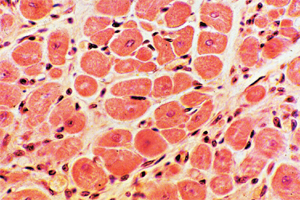The heart is thoroughly covered by a layer dubbed pericardium. This is a sort of a very resistant sack or pouch that reduces friction between the heart and the organs surrounding it in the thorax.
The pericardium is held up by ligaments that serve as supports for the heart, preventing excessive movement caused by the body’s shifts in position. In addition, this layer is a barrier against the spreading of infections.
It is formed by two membranes, dubbed epicardium or serous pericardium and fibrous pericardium or parietal.
Between both there is a space dubbed pericardial cavity, full of pericardial fluids, lubricating the surfaces and allowing the heart to beat.
Function of the different layers of the heart.
-Fibrous or parietal pericardium: it is a pouch made of collagen fibers joined by a network of elastic fibers.
After the pericardium, there are three inner layers:
– Epicardium or serous pericardium: it is the visceral layer surrounding the surface of the heart. The coronary arteries pass through this layer penetrating the myocardium and the endocardium.
– Myocardium: it is the middle layer and the thickest of the cardiac wall. It is the only muscle of the heart containing nerve fibers that help to pump blood by means of automatic contractions.
– Endocardium: it is the innermost layer and is made up by a smooth membrane that allows blood to flow through the four cavities of the heart (two auricles and two ventricles).
The endocardium has three layers: internal or endothelial, middle or sub endothelial and external or subendocardial.
Cardiac cycle and cardiac conduction
The heartbeat is contraction and relaxation (or dilatation) motion. The first one is called systole and the second is known as diastole. The full heartbeat is dubbed cardiac cycle and is carried out in three stages:
– Auricular systole: the auricles contract in order to pump blood towards the ventricles that were empty. The mitral and bicuspid valves open to allow the blood to flow through.
– Ventricular systole: the first heartbeat is produced after both of the valves that opened up earlier are closed. Immediately, the aortic and pulmonary valves open up due to the great flow of blood entering the ventricles.
– Diastole: as blood passes through, the aortic and pulmonary valves close up, the muscles of the heart relax; blood enters the auricles and this pressure makes the mitral and tricuspid valves open up again. Afterwards, the cycle is repeated.








 Muere Evita
Muere Evita